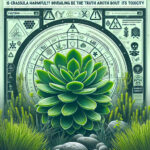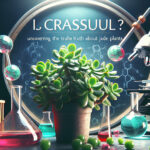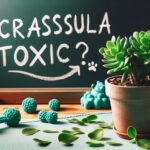Introduction to Crassula Plants
Crassula, a genus that turns the novice thumb a shade greener, is celebrated globally for sprucing up domestic spaces. The charm of these succulents lies in their plump leaves, conjuring the quintessence of a minimalist’s dream garden on window sills and bookshelves. But behind the allure of these trendy botanical buddies lurks an essential query that resonates with caring pet owners and diligent parents alike—is Crassula toxic?
Embarking on a botanical journey with Crassula means welcoming a slice of nature into your urban dwelling, but it’s not just about the aesthetic delight. Imagine cozy evenings with your furry friend, their tail wagging, brushing against potted friends, or a curious toddler, eyes wide with wonder, exploring the foliage fortress of your living room. Herein lies the importance of unraveling the mysteries of plant toxicity—to solidify the symbiosis between greenery and the safety of our cherished companions and little explorers.
As we unravel the green tape, shedding light on the aspects of Crassula that demand our attention, it’s crucial to pause and ponder—how well do we know our leafy co-inhabitants? Let’s dive into this verdant vortex and unearth the truth about our frondescent friends.
Exploring the Crassula Family
Take a step into the world of succulents, and you’ll discover the diverse and captivating Crassula family, a true testament to nature’s splendor. This genus, comprised of an array of species, is not just another collection of plants; it represents a tapestry of resilience and beauty.
Among the Crassula genus, the Jade plant (Crassula ovata) stands out as a household favorite. Often known as the “money plant,” it’s said to bring good luck and prosperity to its owner. Imagine a lush green succulent, with its glossy, plump leaves, perched proudly on a windowsill, basking in the sunlight. This image strikes a chord with plant enthusiasts worldwide.
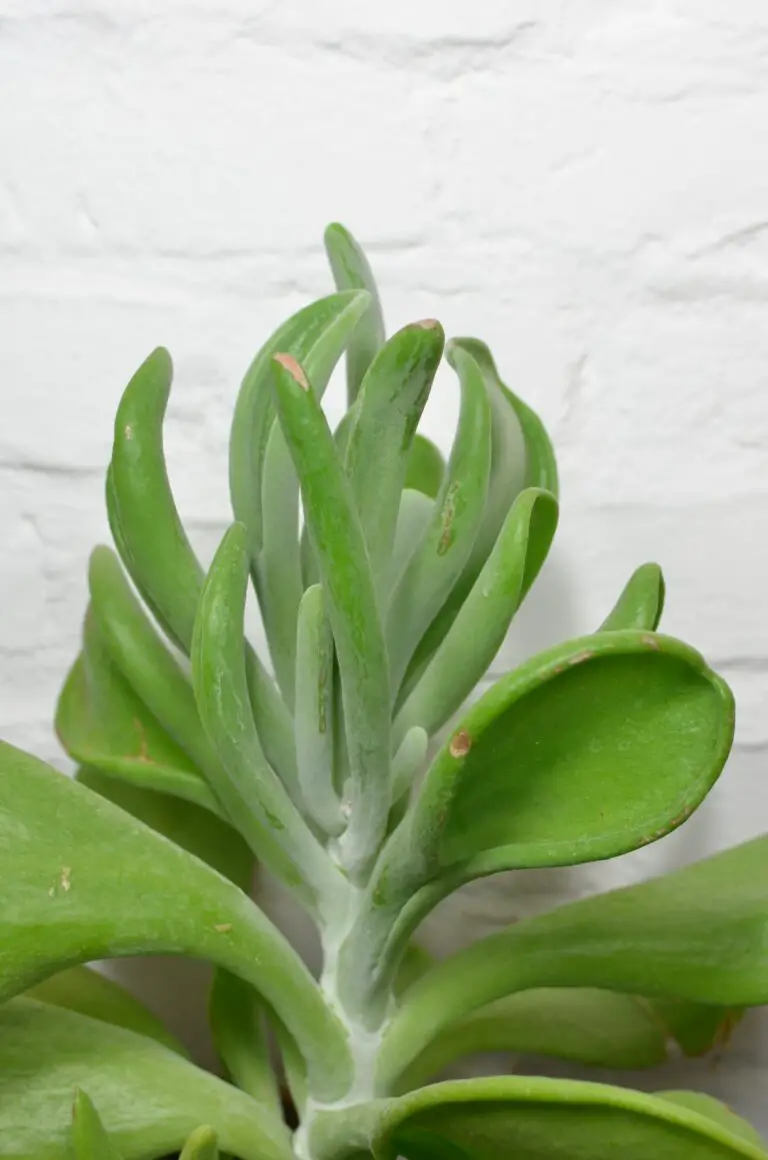
Crassula species are valued not just for their aesthetic appeal but also for their adaptability. They hail from various habitats, including the rocky outcroppings of South Africa’s Eastern Cape where rainfall is as unpredictable as a roll of the dice. These plants have adapted to store water in their thick, fleshy leaves, allowing them to thrive even in the most challenging environments.
Characteristic to the Crassula family is their ability to assume different forms. From the compact, cushioned clusters of Crassula capitella to the strikingly tall Crassula arborescens, each species brings its unique flair to the family tableau. It’s like attending a global reunion where every relative has a distinct personality, yet all share a common lineage.
Walking through a garden filled with these succulents, one can’t help but be amazed at their versatility. The same plant that decorates a minimalist apartment can be found sprawling across rocky terrains, a tribute to their hardiness. For those new to gardening or looking to expand their green space, gaining insight into the care habits and growth pattern of these plants is undeniably rewarding.
Though they might seem humble in their demeanor, the species within the Crassula genus carry with them a story of evolution and survival. Witnessing these thriving amidst urban settings and wildscapes alike, one can’t help but develop a deep appreciation for their enduring charm and resilience.
The Toxicity Debate: Facts You Need to Know
As the allure of the Crassula family captivates plant enthusiasts worldwide, a question silently lingers in the corners of nurseries and living rooms alike—is Crassula toxic? This lush genus, often adorned in homes for its beauty and charm, has been the subject of scrutiny regarding the presence of toxins potentially harmful to both humans and our furry companions.
Let’s wade through the scientific evidence together. Studies, like those documented on National Center for Biotechnology Information, illustrate the complex relationship between Crassula plants and their environment, revealing insights into their chemical makeup. Experts weigh in, suggesting a nuanced perspective where the levels of toxicity may vary among different species within the Crassula genus. But what specific toxins are we talking about? Compounds such as anthraquinones have been mentioned, which in certain concentrations can be concerning.
Imagine a curious cat or an enthusiastic puppy taking a nip out of your indoor Crassula. What could happen? The effects might range from mild gastrointestinal upset to more severe symptoms, depending on the amount ingested and the specific Crassula species. It’s a risk that many pet owners may not want to take lightly, underpinning the importance of identifying your plants accurately and understanding their traits. If you’re diving deeper into Crassula cultivation, such knowledge becomes essential for a responsible and joyful gardening experience.
And what of humans, you ask? While the risks are not as pronounced, caution is advised when handling Crassula plants, especially if you’re prone to skin sensitivities. It’s rarely dangerous, but sporting gloves during your gardening escapades might save you an itch or two. On a brighter note, Crassulas are often celebrated for their air-purifying qualities—another facet of their intricate existence.
For a visual journey through the world of Crassula, let’s take a peek at this enlightening video:
In conclusion, the Crassula’s toxicity is a complex issue, intricately woven into its biological fabric. While caution should always be exercised, especially around pets and children, Crassula plants continue to be beloved for their unique aesthetics and ease of care. Like many things in nature, they are a blend of beauty, utility, and cautionary tales—a triplet that keeps the gardening adventure bold and interesting.
Crassula and Pets: A Risk Assessment
When it comes to our furry companions, their curiosity can often lead them into mishaps, especially with plants like Crassula. You may know Crassula by its more common moniker, the Jade plant. It’s a popular succulent that graces many homes with its glossy green leaves, often without a second thought about its potential risk to pets.
Symptoms of poisoning in cats and dogs can vary but generally include vomiting, lethargy, and a loss of coordination. In severe cases, heart rhythm abnormalities may arise—a worrying sign for any pet owner. When your whiskered explorer starts showing such distressing symptoms after a nibble on this unassuming greenery, alarm bells rightly start to ring.

Imagine this: You return home from work to find your cat slumped, unusually quiet, and near the Crassula plant, which now sports tell-tale bite marks. Immediate action is vital. While consulting professional veterinary advice is paramount, the initial steps you take could mitigate the effects of the toxin. If you suspect your pet has gnawed on the Crassula, look out for drooling or pawing at the mouth as these are early indications of discomfort.
It’s essential to keep all houseplants out of paws’ reach, as the margin between an ornamental delight and a hidden danger is often slim. If you’re ever in doubt about how to handle a potential case of plant poisoning, our in-depth guide on pet care with plant poisoning is an invaluable resource for safeguarding your beloved pets.
Preventive Measures to Ensure Safety
Ensuring that our green friends coexist harmoniously within a home that’s bustling with lively pets and inquisitive little ones can be quite the gardening conundrum. But worry not! The verdant charm of Crassula plants need not be a forbidden pleasure. To sidestep any potential peril, let’s dive into a botanical blueprint for creating a secure environment, shall we?
First off, if the pitter-patter of tiny paws or feet is a common soundtrack at your abode, consider elevating your Crassula. A tall, stable shelf, unreachable to curious cats and climbing kiddos, can be a sanctuary for your succulent. It not only keeps it out of harm’s way but also adds a vertical interest to your décor—a literal and figurative breath of fresh air!
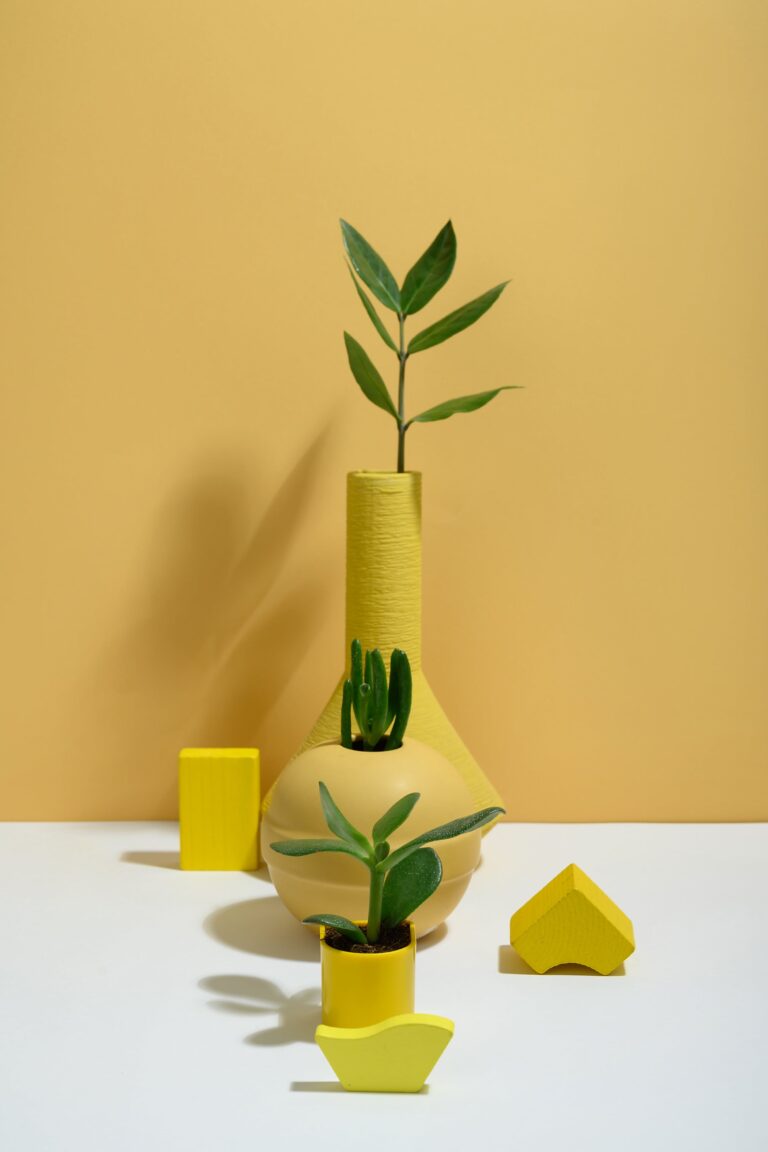
Picture this: a home where every member knows their greens. Yes, an excellent preemptive step is educating the family about which plants are friendly and which ones are off-limits. Just like we teach youngsters not to touch a hot stove, a simple, “We don’t play with this plant because it’s not safe for our furry friends,” can impart lifelong habits of caution and respect towards nature.
Now, if you’re pondering replacing or complementing your collection, there is a myriad of non-toxic green wonders waiting to be discovered. Peppy spider plants, cascading Boston ferns, or even robust bamboo palms can inject that zest of nature into your living space, sans the scary side-effects. Positioning them amidst a variety of textures and hues will not only safeguard your family’s well-being but also create a tapestry of plants that are as safe as they are splendid.
Let’s not forget, the art of imitation can be your ally in this quest for caution. Artificial plants have come a long way, with some faux botanicals being nearly indistinguishable from their living counterparts. They provide the lush look of plants with zero risk—for those wanting the aesthetic without the nitty-gritty.
In the end, the trick lies in being proactive rather than reactive. A little foresight goes a long way in ensuring that your home remains a harmonious habitat for all. So go on, cultivate your indoor oasis with confidence and peace of mind, knowing that you’ve taken the diligent steps to make it a safe haven for every two-legged and four-legged creature alike.
Case Studies: Real-life Incidents of Crassula Toxicity
When it comes to understanding the risks associated with the charming Crassula plant, there’s no substitute for hearing directly from those who’ve faced its darker side. In this eye-opening section, we delve into the experiences of pet owners and parents who’ve encountered the toxicity of Crassula in their everyday lives.
A Close Call with Crassula
Take, for example, the Jones family from sunny California. Their adored feline, Whiskers, became lethargic and refused her kibble only hours after playfully nibbling on a Crassula leaf. A quick visit to the vet confirmed their fears: Whiskers had ingested a plant toxic to pets. Thankfully, with swift medical attention, she recovered, but the incident left the family vigilant about the greenery in their home.
The Hidden Hazards in a Toddler’s Reach
Then there’s the harrowing recount from the Martins in Texas. Their curious toddler, Eli, suffered from excessive drooling and a bout of vomiting after sneaking a bite of a Crassula leaf while exploring the living room. The seemingly innocent household plant had posed an unexpected threat. Although Eli bounced back after a tense day, the Martin’s no longer decorate their abode with Crassula.
The accounts go on, each one underscoring the crucial need for awareness and precaution when it comes to Crassula plants. While not deadly, their potential to cause harm in sensitive individuals, particularly pets and children, is a sobering reminder of the caution required with indoor plants.
It’s not just anecdotes that sound the alarm; veterinary clinics and poison control centers echo the significance with statistics and reports that confirm the need for prudence. Our leafy friends may be the cornerstone of home decor, but keeping our beloved companions safe must take precedence.
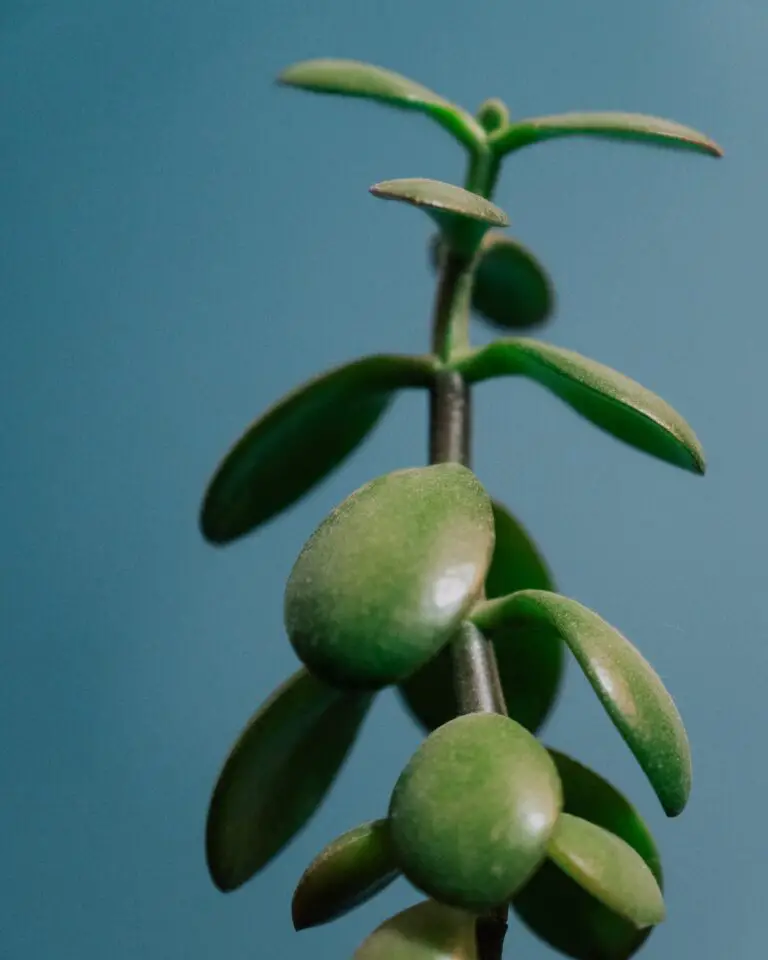
Real-world cases such as these are invaluable, painting a vivid picture of the attention pet owners and parents should exercise. After all, our homes should be safe havens, not hidden minefields. Forewarned is forearmed; by sharing these stories, we aim to arm Crassula admirers with the knowledge needed to prevent any unfortunate repeats of such troubling incidents.
Dispelling Myths Around Crassula Plants
When it comes to houseplants, few are as captivating as the jade-like leaves of the Crassula species. These succulents grace our homes with a touch of greenery, but amidst the admiration, whispers of their toxicity often bubble to the surface. Let’s untangle fact from fiction and shed some light on the real story behind the safety of these popular plants.
The concern typically roots from the belief that all succulents must be poisonous if their siblings from the leafy realms present such risks. However, not all plants should be tarred with the same botanical brush. While it’s true that some members of the succulent family can pose a threat to pets and humans, Crassula plants often get unfairly labeled.
Consider the time your neighbor frantically called you after her cat had a curious nibble on a Crassula leaf. The panic was palpable, but as it turned out, the furry friend suffered no more than a slight tummy upset. Such anecdotes are common, with many fearing the worst, only to discover that the Crassula’s bark is, in fact, worse than its bite.
Encounters with these green companions rarely escalate beyond mild gastrointestinal discomfort. This is a far cry from the alarming symptoms one might expect from truly toxic plants. It’s essential to keep a balanced perspective when evaluating the danger Crassula poses—recognizing the distinction between mild irritants and lethal poisons is key.
Remember that while cautiousness is a virtue, it should not cloud our judgment. Our leafy lodgers like Crassula have far more to offer than risk. By staying informed and observing sensible precautions, we can continue to coexist with these beautiful plants without undue concern. After all, the likelihood of severe poisoning is far less common than the general green thumb may perceive.
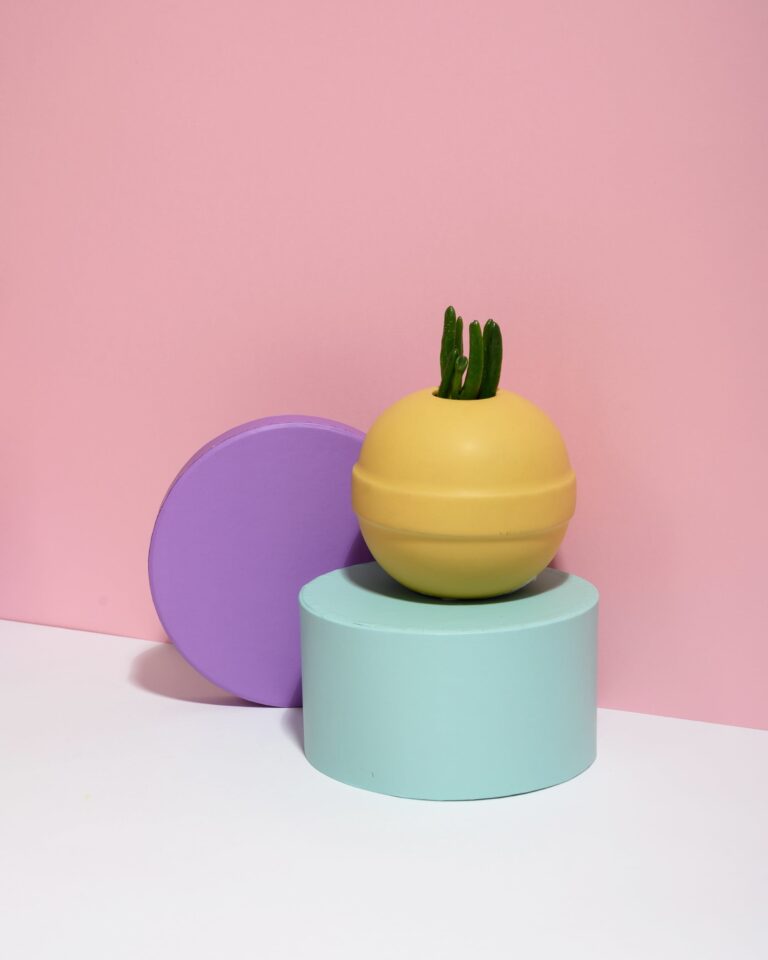
In closing this chapter of myth-busting, let’s appreciate the emerald elegance of Crassula plants for what they truly are—safe, serene, and splendid additions to our indoor ecosystems. With knowledge as our guide, we can dispel fears and grow our green sanctuaries with peace of mind.
Final Thoughts on Crassula Toxicity
Throughout this article, we’ve delved into the beguiling world of Crassula, a plant that wins hearts with its plump leaves and easy care, drawing many to welcome it into their homes and gardens. Yet, as with any botanical companion, understanding its nature is crucial. Hence, the question persists: Is Crassula toxic?
Our journey revealed that Crassula can indeed pose a risk if not respected for its toxic properties, particularly to our curious pets who may nibble unsuspectingly on its succulent leaves. Remember the story of Max, the adventurous cat who mistook the jade-like leaves for a harmless treat, only to end up at the vet? It’s a stark reminder that knowledge is our best defense. However, that doesn’t mean you need to exile your beloved Crassula to some out-of-reach sanctuary. Instead, awareness and preventive care can create a safe coexistence. With information artillery at your side, you can enjoy the succulent’s elegance while protecting your furry family members.
It’s a balancing act between admiring Crassula’s beauty and acknowledging its hidden sting. This duality is a common theme in nature—beauty often masks complexity. By dissecting Crassula’s potential toxicity, we’ve armed ourselves not only with the capacity to recognize the signs of plant-induced discomfort but also with the insights to ensure safe and harmonious living spaces.
To boil it all down, the tale of Crassula is not one of fear, but of respect and responsibility. Whether you’re a seasoned plant enthusiast or a beginner green-thumb, this succulent can be a joy as long as you’re informed and mindful. Keep your pets informed too, with a gentle paw tap away from temptation, and Crassula will continue to be the charming, serene presence you cherish in your daily environment. So take the plunge, grow your knowledge, and let Crassula thrive—in every sense.
Frequently Asked Questions
With the lush, jade-green allure of Crassula plants, it’s easy to understand why they are such popular houseplants. But beneath their beauty, questions arise about their safety, particularly around their potential toxicity. Let’s delve into the most pressing queries that houseplant enthusiasts and pet owners alike may have.
Is Crassula ovata toxic to humans?
Commonly known as the Jade Plant, Crassula ovata carries a beauty that’s hard to miss. Yet, for all its visual charm, it’s often asked if this green gem poses a threat to us. While it’s generally considered safe, it’s important to handle it with care to avoid any issues, especially if you have a tendency to touch your face after tending to your plants.
Can Crassula cause skin irritation?
Imagine you’re repotting your beloved Crassula and later you notice your skin feeling itchy. While it’s not a widespread concern, some people might experience mild skin irritation after handling these plants. It’s always a smart move to wear gardening gloves as a proactive measure, so you can enjoy your gardening experience without any unwanted souvenirs.
How do I know if my pet has Crassula poisoning?
Our furry friends are known for nibbling on things they shouldn’t, and sometimes that includes houseplants. If Rover or Whiskers starts to show signs of vomiting, lethargy, or a decrease in appetite after a close encounter with a Crassula, it’s time to call the vet. These could be telltale signs your pet has ingested parts of the plant, which can be toxic to them.
Are all Crassula species toxic?
Just like a box of assorted chocolates, Crassula species offer a variety of experiences. While not all of them are harmful, it’s essential to research the specific type of Crassula you’re bringing into your home, especially if you have curious pets or children. Knowledge is power, and knowing which species are safe can provide peace of mind to any green-thumbed enthusiast.
Crassula plants are as mysterious as they are beautiful, and understanding their nature is key for any indoor gardener. To get a vivid picture of how to care and spot issues with these succulents, here’s a useful video guide:
Dive deeper into the world of Crassula, and as you do, keep the well-being of your green-loving home at the forefront. Awareness and proper care can ensure that your plant-keeping journey is both safe and enjoyable.
